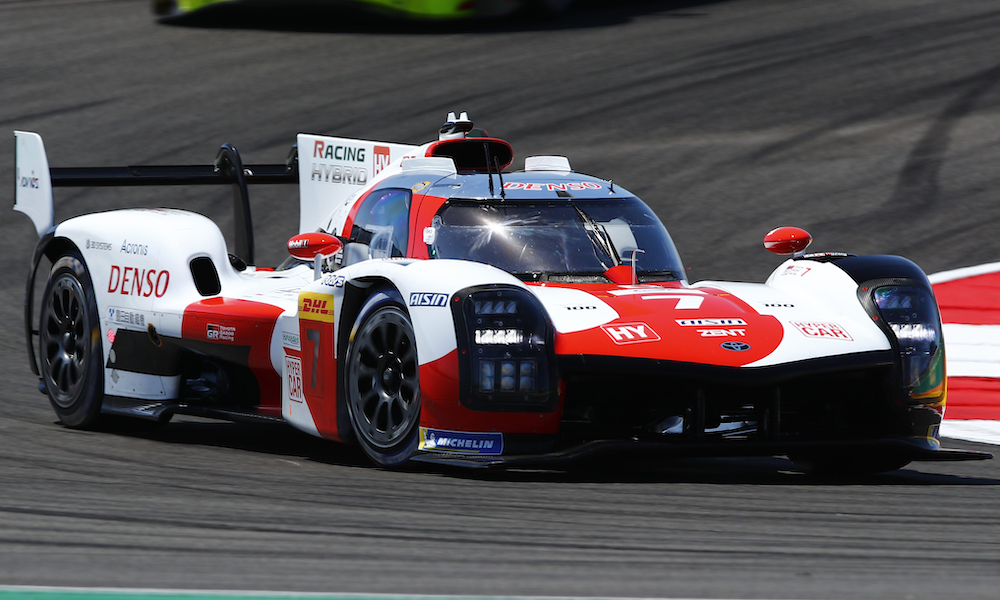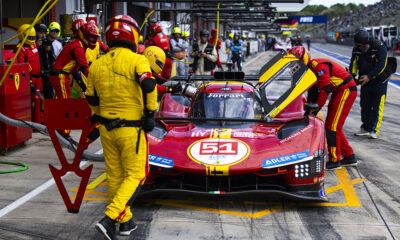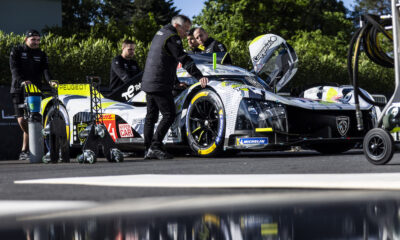Toyota Gazoo Racing’s technical director says the manufacturer is content with the Hypercar Balance of Performance at Portimao despite it having a “negative” impact on the stratification between the FIA World Endurance Championship’s top class and LMP2.
Toyota’s GR010 Hybrid Le Mans Hypercars have been handed an additional 26 kg for round two of the season this weekend, while Alpine Endurance Team’s grandfathered LMP1 car has been made 22 kg heavier since the Total 6 Hours of Spa opener last month.
Both Hypercar entrants have also received slight power reductions.
The measures have been put in place to accommodate the arrival of the non-hybrid Glickenhaus SCG 007 LMH and, according to Toyota and series co-organizer the ACO, do not reflect on performances from the Spa race which a GR010 Hybrid won.
The knock-on effect of the BoP is that the added weight and reduced power will do little to increase the pace gap between Hypercar and LMP2, which was a talking point at Spa.
“I would say it is exactly a part of the BoP process,” Toyota technical chief Pascal Vasselon told Sportscar365 during a meeting with reporters at Algarve International Circuit.
“The BoP process includes a so-called initial balance that is based on the homologation data.
“The FIA and ACO have a lot of data about our car. The characteristics were measured in the wind tunnel test at Sauber. They have engine data and weight.
“Based on that, they are able to make a rough initial balance. So this adjustment reflects the entry of Glickenhaus.”
Vasselon described the Portimao BoP as a “planned process” to ensure a balance in the homologated data of all the Hypercar vehicles at the launch of the LMH formula.
However, he also acknowledged that adding weight and reducing power for Portimao will not help in the quest for adequate separation between Hypercar and LMP2.
Toyota’s team director Rob Leupen said the Japanese marque arrived in Portugal with “not less of a concern” about the stratification compared to Spa, where it stated that the performance gap between the two categories was not enough.
So far LMP2 cars have led two out of two Free Practice sessions at Portimao, although the gaps between the leading cars from the two prototype classes have been extremely close.
“What is a bit more negative in the context we have, is that this makes us slower: something like 0.6 seconds,” explained Vasselon.
“In race averages at Spa, we were 1.3 seconds ahead of LMP2. It means that the gap to LMP2 is further reducing. This is, somehow, a big problem.
“But from the LMH side, the Hypercar side, [it is] not avoidable. This was part of the agreed process.”
The ACO’s director of competition, Thierry Bouvet, explained that the Portimao BoP is a ‘starting’ BoP and will soon be succeeded by a race performance-based ‘rolling’ BoP once the series’ technical team is satisfied that all Hypercars have provided enough data.
“It is not a performance adjustment BoP change,” he said.
“It’s all related to technical parameters. It is not at all to try to level up the field. In the LMH regulations, we have performance window targets, which are already quite small.
“What we are looking at is how apart they are and correct those differences. It is nothing to do with what we have seen on track.”
Alpine Endurance Team boss Philippe Sinault would not comment specifically on the Hypercar BoP for Portimao but suggested that the measures will ensure that stratification remains a challenge, at least for this weekend.
“It is a very difficult exercise because when you are arriving with a new contender like Glickenhaus, [the WEC] try to manage the situation,” he said.
“We will see after practice exactly where we are. The main difficulty is you have Hypercar and LMP2.
“The range and the spectrum between the two is now really tight. It’s a difficult game to play and to try to manage. I’m sure that if a P2 is too [far] in front, the ACO and FIA will find a way to manage the situation.”
Per the WEC’s 2021 rules, LMP2 cars are running in Le Mans-style low-downforce trim at all venues including Portimao, which is a track that demands a high-downforce setup.
They are also carrying more weight and less power compared to last year. The ACO has already said that it will not impose further performance cuts to increase the gap to Hypercar.
One LMP2 team principal noted that the second-tier prototypes would be less effective at Portimao than at Spa, and estimated that they would be two seconds a lap slower on average in the Algarve against last year’s pre-restriction European Le Mans Series cars.
“Portimao is a high-downforce track, so we should see a slightly bigger gap per kilometer here compared to Spa,” said Vasselon.
“But at Spa we were at 1.3 seconds on 7km. Here we are closer to 5km so the gap will be smaller.
“Especially with the BoP adjustment, which we cannot contest because it has to happen, the gap will be extremely small. So we are back to the discussion from Spa.”
























